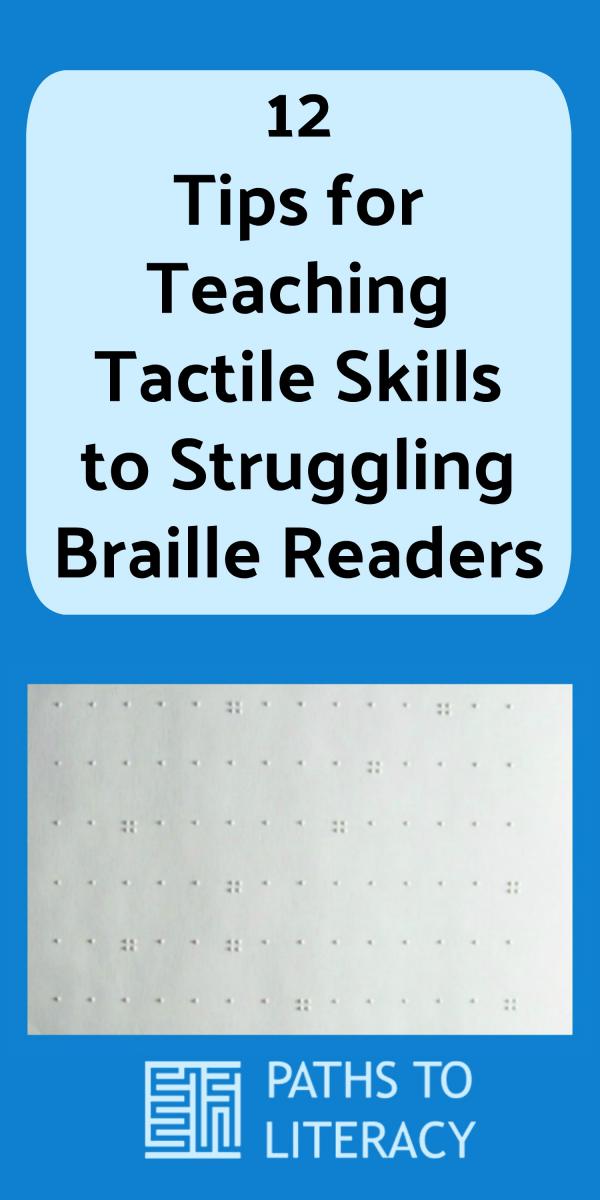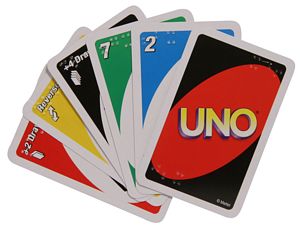12 Tips for Teaching Tactile Skills to Struggling Braille Readers
Submitted by Elsie Rao on Oct 02, 2017
 Struggling braille readers may easily become frustrated or discouraged, so it's critical to find ways to ensure success whenever possible. Here are some strategies to promote tactile skills with struggling braille readers:
Struggling braille readers may easily become frustrated or discouraged, so it's critical to find ways to ensure success whenever possible. Here are some strategies to promote tactile skills with struggling braille readers:
-
Implement a variety of tactile activities throughout the daily schedule. Students need practice not just reading braille, but also using tactile information.
- Put an article in a bag and have the student remove it and describe it - NOT tell you what it is. Ask them to think about questions, such as how much does it weigh, how long, what shape, what else might be like this, what is the purpose of the item, how is it different from yesterday's item, etc. This is a good starter for lessons, introducing seasons of the year, special events, common knowledge, etc.
- I recall putting a boat in the bag when the movie Titanic was showing.
- Another example would be a stapler, and then to teach students how to use it. By third grade kids need to use one daily to help their teacher pair braille and print pages.
- A pen and pencil can help to teach likenesses and differences.
- Every fruit imaginable showed up in the bag and then we had tasting parties one year.
- Toys like a yo-yo, or other toys of the day can be put in the bag.
- Students must answer in complete sentences (no one word answers). In fact students should be taught to respond to all questions in complete sentences.
- All this ties into improving sentence structure, writing, common knowledge, and even social skills.
- Use symbols to define a daily schedule. Think about how the calendar system uses symbols to define the activities of the day. Make them small, but meaningful for your student.
-
Play tactile games -- anything can be a game if you call it a game. Beyond ones you make, there are a variety of tactile materials available from APH, LSS, MaxiAids, and the dollar stores (they often have incredible products that are easily adaptable). Games provide a way to measure student progress, e.g. how many correct this time compared to last time.
- There are lots of different types of games that work on various skills at different levels. For example, there are pre-braille games that require matching a tactile surface. Dominoes is a good game that uses tactile skills, plus it reinforces math facts. It all can be used to play with sighted peers.
- The APH stickers that peel off (Feel 'n Peel Stickers) are easy to use to create a set of cards for a matching game.
- When it comes to reading, make sure the proper fingering techniques are ALWAYS used, i.e. fingers bent when reading, using two hands together, seated upright with feet squarely on the floor, no scrubbing and not too much back-tracking. (If you are unsure about technique, try to find a braille reader or experienced teacher and let them show or explain how to read.) Let your student teach you a lesson, then another professional, then a peer. Once the student masters proper reading techniques, allow him to take a lesson home to teach his mom/dad/sister/friend. It's important to know that he understands the proper technique, as well as the content of the lesson lesson. By teaching something to others, you really "own" it. In addition, having a student teach others creates valuable repetition. (I never called it homework!) This doesn't happen in a week or two, so be patient, as it will take time.
- Jumbo Brailler: Find a jumbo brailler and introduce individual letters like a, b, c, g, & l. Using braille pages, present some letters that are meaningful to the student, such as the first letter of his or her name or mom/mama or dad, sister or brother or the first letter of their names. It works best to laminate the braille paper, so it holds the braille and is suitable for making cards. If you make cards, use pinking shears (from a seamstress) to identify one edge of the playing surface, as well as snipping one corner.
- Mangold Program: The Mangold program is designed to teach kids tactile discrimination and braille reading skills. It is helpful to begin by studying the layout, sequence, and the way the pages are made. You can then create additional pages using similar layouts, such as brailling lines of "a"s double spaced interspersed with the letter being introduced. This tactic can be used with other letters as well; again, with letters very different from the letter being introduced. For example, lines of "l" can be used for introducing the letter "c". It is a good idea to make lots of pages so the student doesn't have the opportunity to memorize the page. The goal is to ensure student success and to continue using one letter per line until they are able to achieve 95-100% success.
![]()
- Provide exposure to name in braille: Braille the student's name and paste it as many places as you can find: on her chair, locker, book bag, backpack, etc. Invite the student to braille her name and enlist her help in making and placing her names.
- Braille TACK-TILES® can also be useful in promoting braille literacy among struggling readers. Get ideas on how to use TACK-TILES® to build braille skills.
General Tips
- Structure short lessons-starting with one minute reading time-in order to build endurance. Endurance is a critical skill. Teachers can try to do the lesson which gives them an opportunity to learn/use tactile skills.
- Lessons need to be staged so success is always attainable.
- Be patient and optimistic. You must stay positive. Record your lesson and review it later to evaluate the student's reactions/commitment/ frustrations. This may also give you more ideas to use in future lessons.
- Students who have tactile issues lose interest in trying to read as it is frustrating, so go slowly, use very short reading periods numerous times a day.


Comments
Information
Reading modes
Sentence Trees to build endurance and literacy
Great idea!
12 Tips for struggling Braille readers. Post